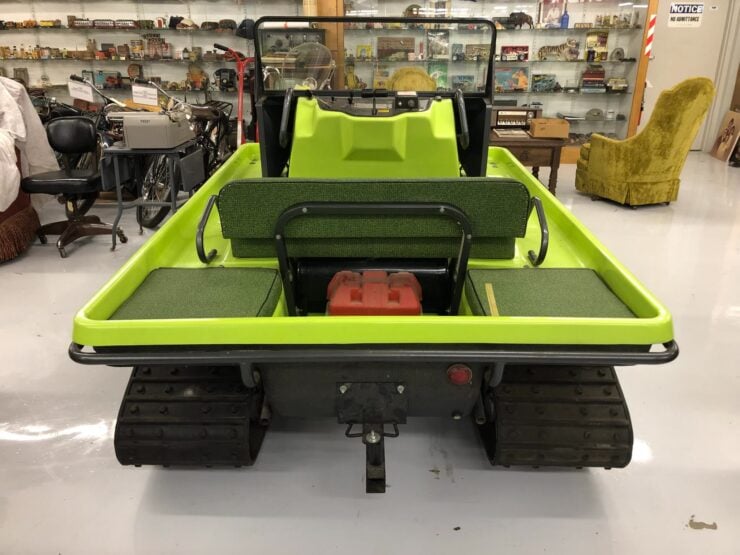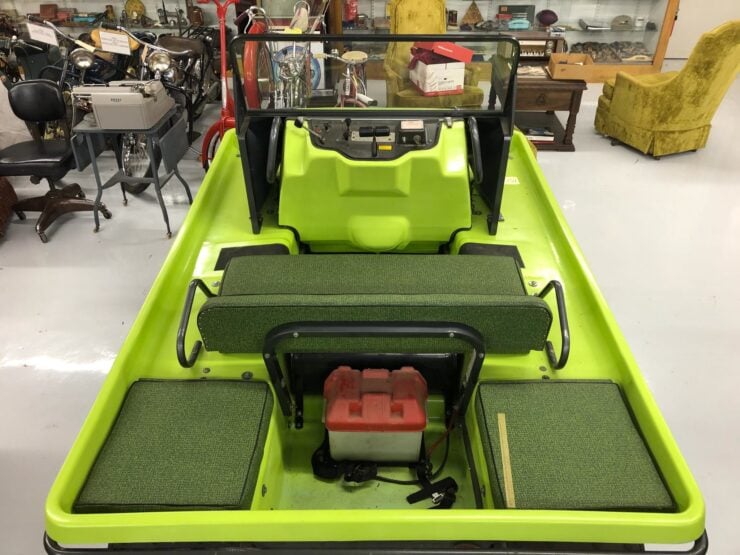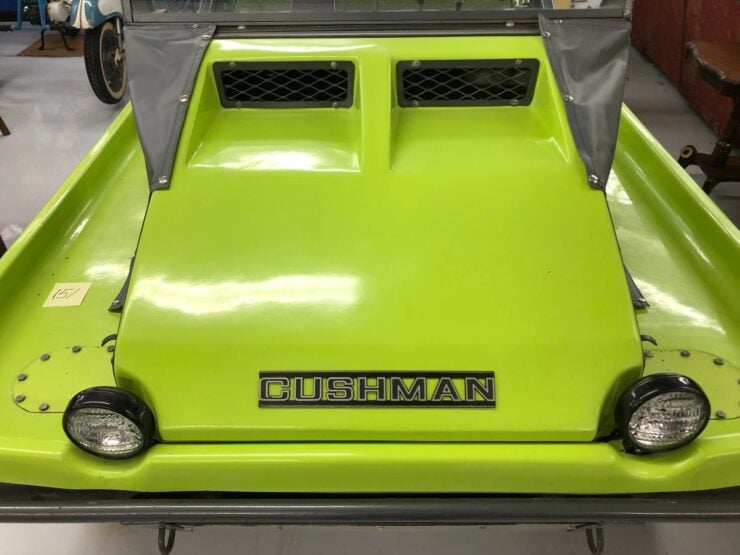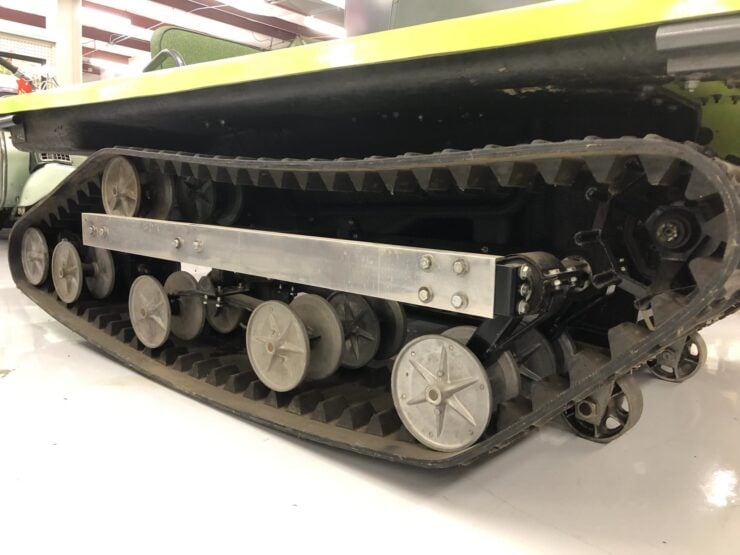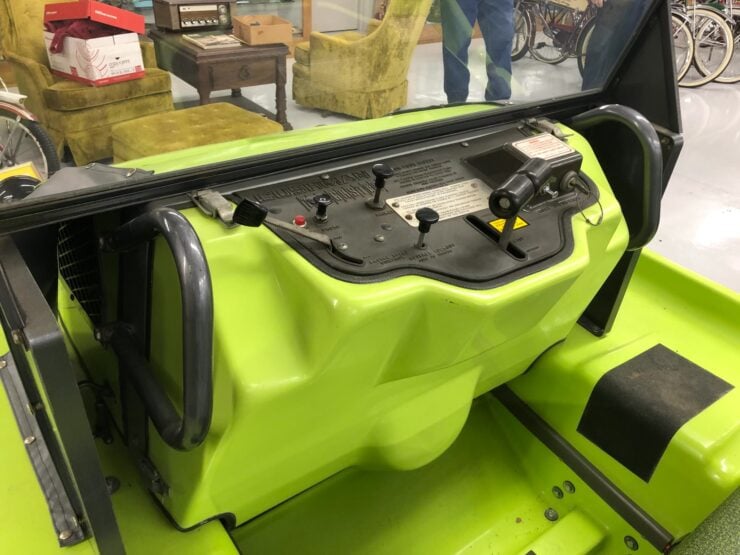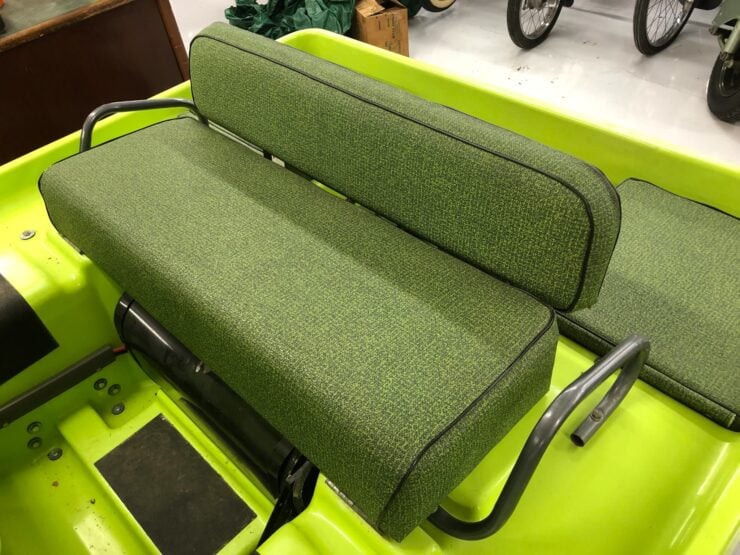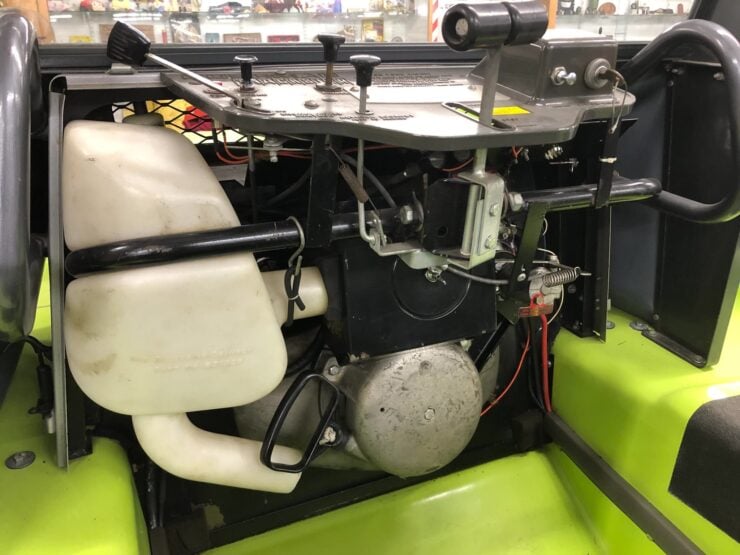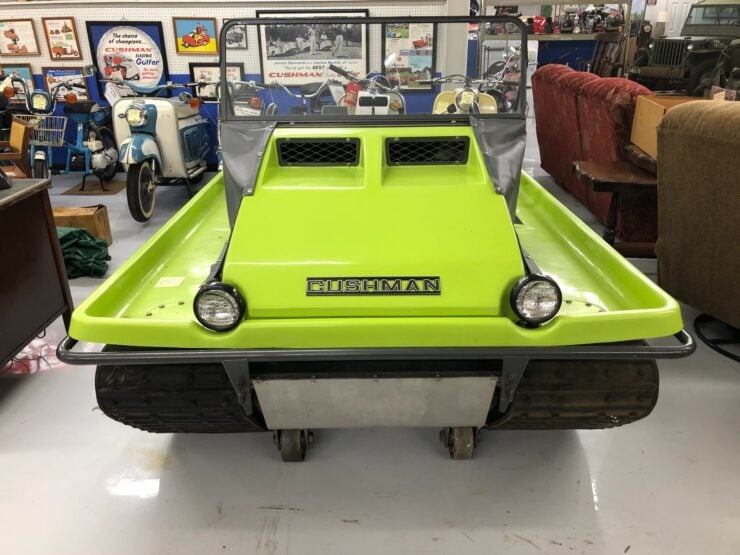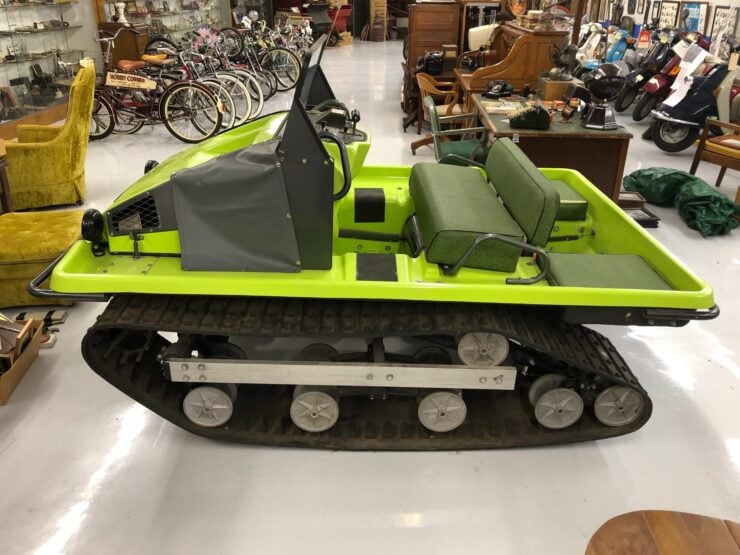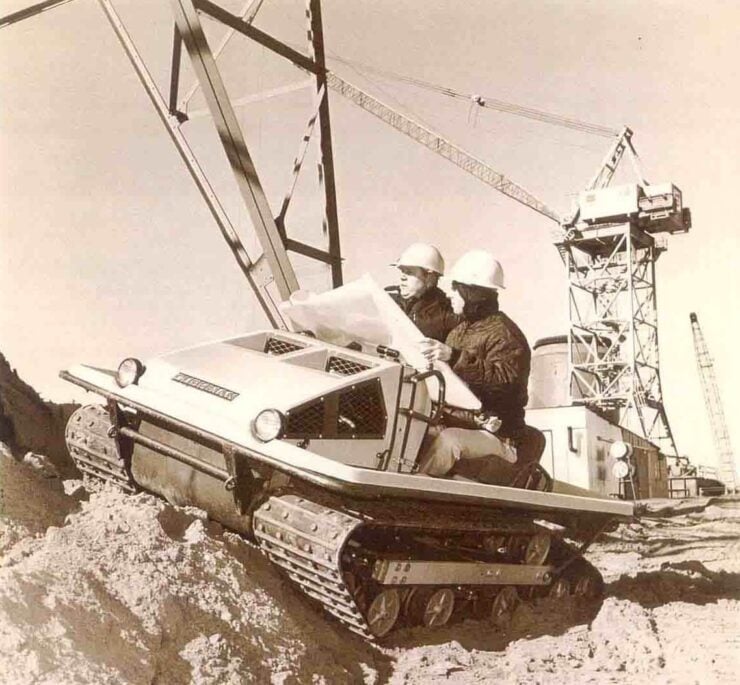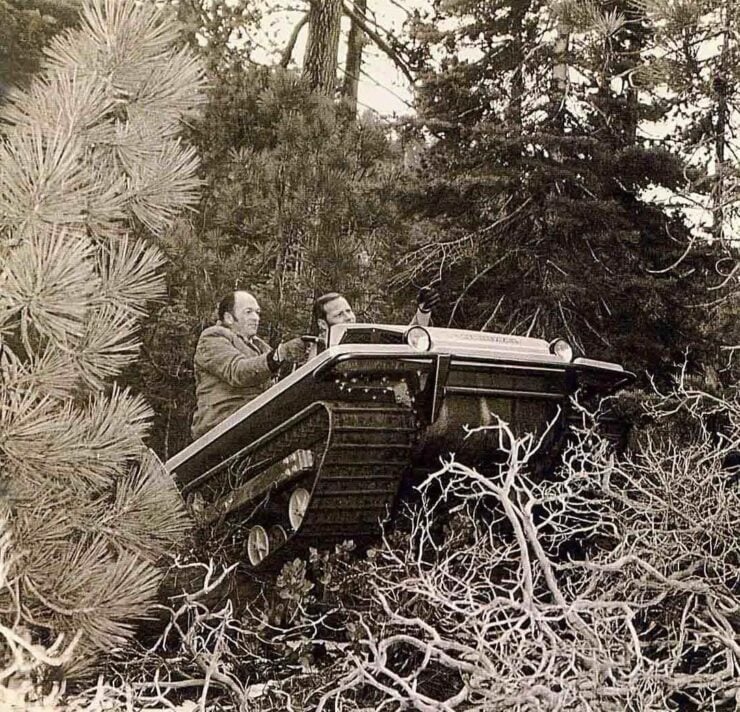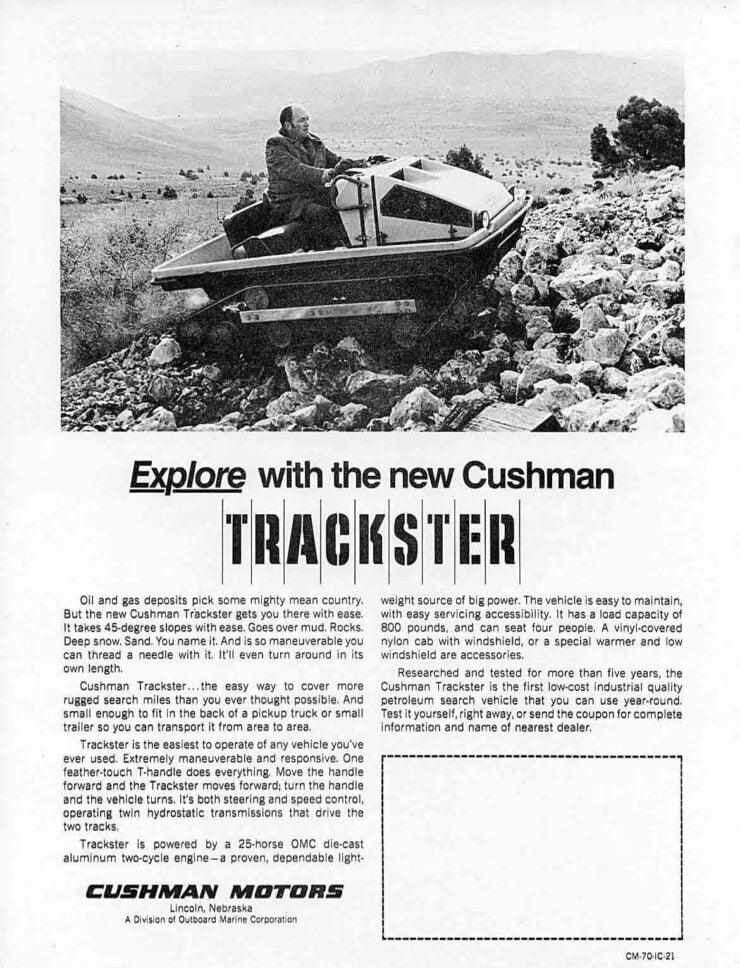This is a 1970 Cushman Trackster. It’s an ATV that was developed by Cushman engineers as the final word in navigating difficult to downright cantankerous terrain with up to four people aboard.
The Trackster borrowed heavily from snowmobile design, with rubber tracks, a fiberglass body, and a 437cc two-stroke engine that was sourced directly from one of the company’s snowmobile models.
Fast Facts: The Cushman Trackster
- The Cushman Trackster was a unique ATV designed for inhospitable terrain, featuring a fiberglass hull, rubber tracks, and a 437cc two-stroke engine borrowed from Cushman’s snowmobiles. It could carry up to four people but realistically accommodated two adults comfortably, and offered floating capabilities, with additional flotation kits for safer aquatic use.
- Initially nicknamed the “Cadillac of ATVs,” the Trackster targeted high-end customers with an MSRP equivalent to over $20,000 in today’s dollars. Popular Mechanics magazine praised its impressive terrain-handling abilities, including steep climbs and water navigation, prompting Cushman to aggressively market the Trackster through a nationwide dealer network.
- Despite ambitious plans, the Trackster’s high price point severely limited sales, and Cushman faced multiple lawsuits claiming the vehicle’s capabilities had been overstated. Some customers experienced failures like sinking incidents, leading to legal challenges and contributing to the eventual discontinuation of Trackster production by the mid-1970s.
- The specific 1970 model discussed here is potentially the only unused Trackster remaining, originally serving as a courtroom exhibit for Cushman’s parent company, Outboard Marine Corporation (OMC). After years of storage, this historically significant ATV is now up for sale, requiring thorough mechanical servicing before it can be safely operated again.
“The Cadillac Of ATVs”
The Cushman Trackster was released in the late 1960s right into the melee of the rapidly growing ATV (all-terrain vehicle) market in the United States. It was being sold to customers at the higher end of this market, with an initial MSRP of $2,300 USD, the equivalent to just over $20,000 USD today.
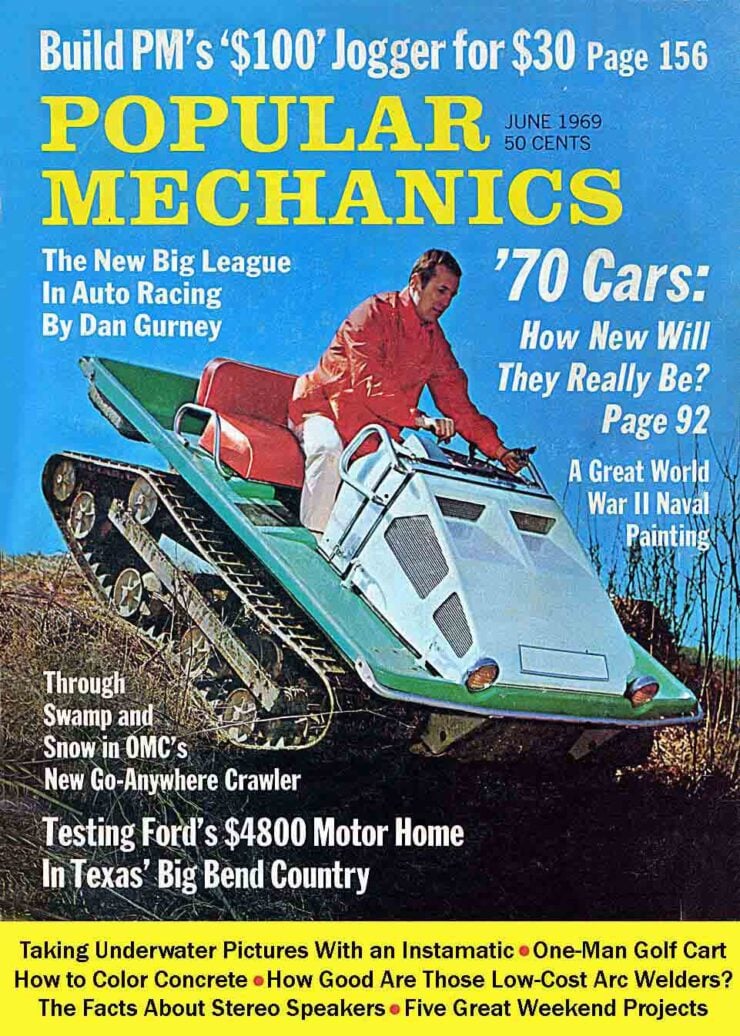

A period review by Popular Mechanics magazine extolled the praises of the Trackster, particularly its ability to climb seemingly impossible grades and work on water. The reviewer, Bill Kilpatrick, coined the name the “Cadillac Of ATVs” based on the price and the size of the Trackster compared to other ATVs of the time.
This comparison to Cadillac was music to the ears of the Cushman PR department, and they wasted no time in capitalizing on it. By the arrival of the 1970s Cushman executives were hard at work establishing a nationwide dealer network for the Trackster, it’s clear they had high hopes for the vehicle and saw it becoming a dominant force in the hotly contested American ATV market.
The Cushman Trackster: Specifications
The Cushman Trackster is built around a one-piece fiberglass hull that is watertight, and allows the vehicle to float with a maximum of two occupants. There was a kit that owners could buy to increase the height of the freeboard for safer water use, and an additional “Marsh” model was also offered with floats that made it better suited to regular aquatic excursions.
Inside the hull you’ll find a simple steel frame made up of tubular and flat steel sections. Power is provided by a 25 bhp flat-twin. This 437cc engine was the same die-cast aluminum, air-cooled, two-stroke, model used in a number of the company’s snowmobile offerings.
Power was sent through twin Sundstrand hydrostatic transmissions to the rubber tracks through gear reduction drives. Each set of bogie wheels is individually suspended by rubber “torsilastic” mounts, a set of steel springs, and rubber shear mounts.
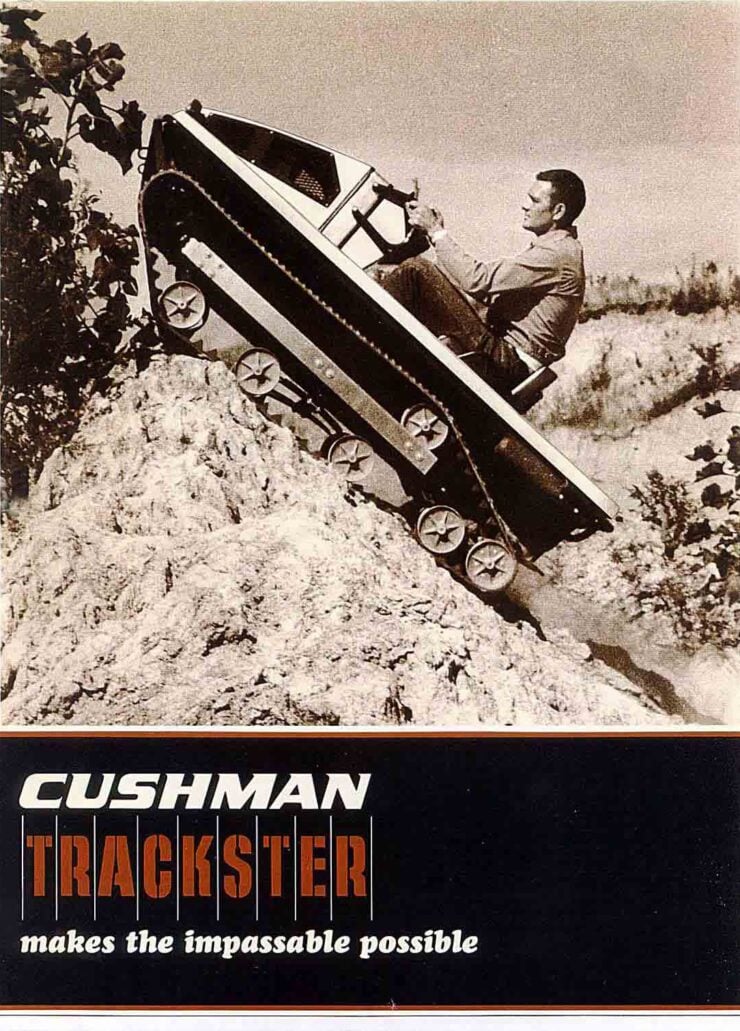


These vehicles were never intended for high-speed use, and so the top speed was just 16 mph on a flat hard surface, less once you got off road. Reverse gear gave up to 7 mph, but many owners seem to have made little use of reverse, as the Trackster could be spun around on the spot much like a tank.
The engine had both an electric starter and a pull starter. This was inherited from the snowmobile engine, where a manual starting option is required for when extremely low temperatures have killed your battery and the electric start becomes more of an aspirational feature.
Control was via a T-bar lever which controls forward and reverse, steering left and right, and speed, all by moving/twisting it in your required direction. It could carry up to four people plus some gear, though that said, the two inward-facing rear seats were really only suitable for smaller people or children.
The Sales Figures + Lawsuits
Sadly, the sales figures of the Trackster were never even close to what Cushman, or their parent company Outboard Marine Corporation (OMC), had hoped for. This was likely mostly due to the prohibitively high asking price, as many other (simpler) ATV designs could be had for under $1,000 USD.
The other weight around the neck of the Trackster were a series of class action lawsuits brought against the company by the mid-1970s by customers who said that Cushman had overstated the abilities of the vehicle.
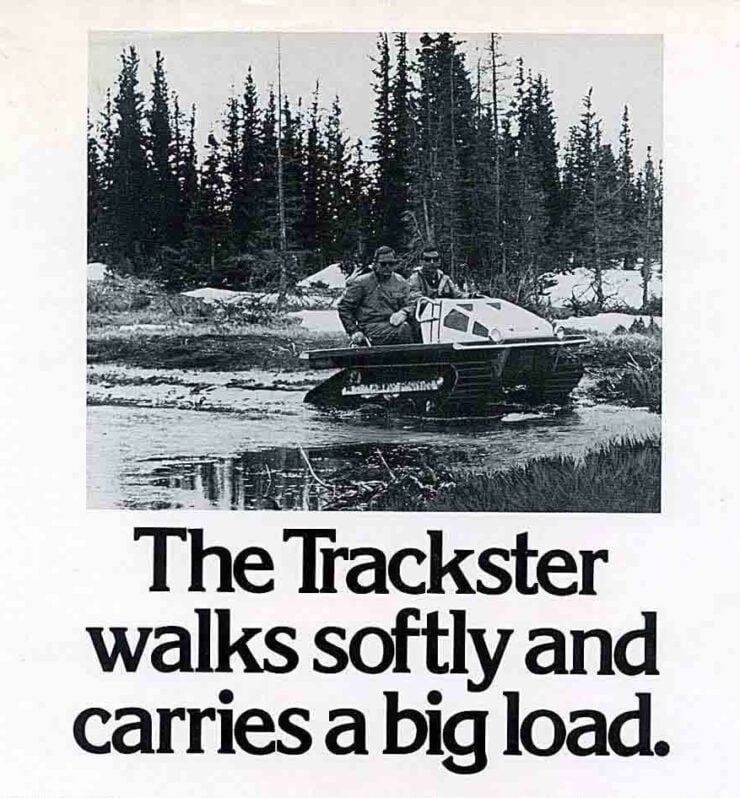


To be fair, the brochures did seem to extol the virtues pretty broadly, and there were cases of people driving their Tracksters into water and promptly sinking them. Production seems to have ended by the mid-1970s, it’s not known exactly how many were built, but they’re a rare sight today.
The 1970 Cushman Trackster Shown Here
The vehicle you see here is a 1970 Cushman Trackster that may very well be the only unused example in the world. It’s said to have been used by OMC as a courtroom exhibit during their defense of the above-mentioned lawsuits.
In this capacity, the Trackster was transported between courtrooms on the caster-wheel dolly that is now included with this sale. After the lawsuits were resolved, it was placed into long-term storage for decades, before being donated to a museum around the year 2000.
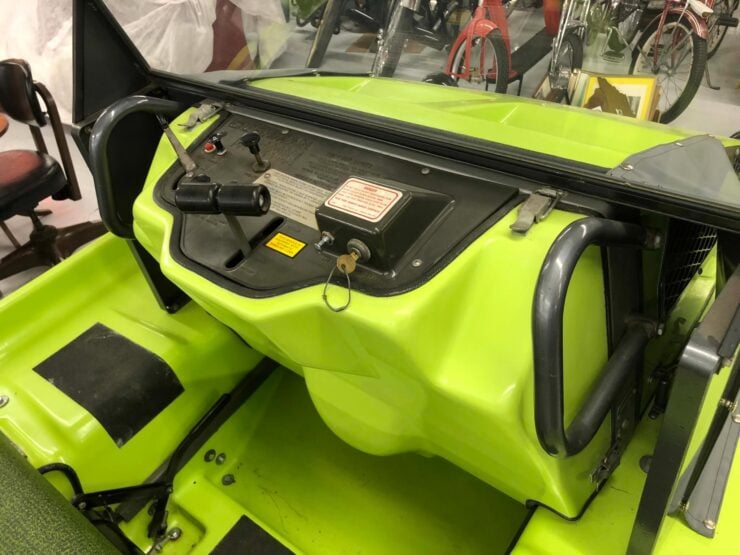


The operational condition of this Trackster is now unknown, and any new owner would want to give it a full mechanical refresh before any driving is attempted.
It’s now being offered for sale out of Concord, North Carolina on Bring a Trailer with a cover, the caster wheel dolly, and a bill of sale. If you’d like to read more about it or place a bid you can visit the listing here.
Images courtesy of Bring a Trailer


Articles that Ben has written have been covered on CNN, Popular Mechanics, Smithsonian Magazine, Road & Track Magazine, the official Pinterest blog, the official eBay Motors blog, BuzzFeed, Autoweek Magazine, Wired Magazine, Autoblog, Gear Patrol, Jalopnik, The Verge, and many more.
Silodrome was founded by Ben back in 2010, in the years since the site has grown to become a world leader in the alternative and vintage motoring sector, with well over a million monthly readers from around the world and many hundreds of thousands of followers on social media.


